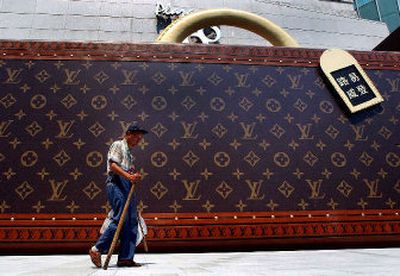Great leap backward

SHANGHAI, China — The gap between China’s richest and poorest citizens is approaching a dangerous level and could lead to social unrest, state media reported Wednesday, citing a government study.
The most affluent one-fifth of China’s population earn 50 percent of total income, with the bottom one-fifth taking home only 4.7 percent, said the report by the official Xinhua News Agency, carried in newspapers Wednesday.
“The income gap, which has exceeded reasonable limits, exhibits a further widening trend. If it continues this way for a long time, the phenomenon may give rise to various sorts of social instability,” it said.
The reports reflect a growing public recognition of the simmering discontent that has provoked protests and sometimes violent clashes in disputes over labor, pollution and other issues. But apart from adjusting income taxes to reduce the burden on middle-income earners, there have been no signs the government plans to confront the problem with any major policy changes.
Attention has focused especially on mistreatment of migrant laborers from the countryside, in the wake of a case involving a construction worker who killed four people when he despaired about his pay.
Urban incomes in China now average about $1,000 a year, while in the countryside incomes still average just over $300. Other developing countries with income levels about that of China, have tended to see “social contradictions” over time, the Xinhua report noted.
The language harkens back to the revolutionary era of Mao Zedong, when the Communist Party nationalized private business and seized land from wealthy farmers in one of the most extreme leveling campaigns ever undertaken.
These days, the wealth gap is evident everywhere, from elderly citizens digging through downtown trash bins for plastic bottles to recycle to migrant shacks squeezed between luxury villas in Shanghai’s suburbs.
Among the wealthiest are private business owners whose fortunes were built through hard work and talent, the Xinhua report said — and those whose riches stem from corruption and crime.
Meanwhile, according to the China Poverty-Relief Fund, nearly 30 million Chinese live in absolute poverty, meaning that by local standards they lack enough food and clothing. Another 60 million have incomes below 865 yuan (about $100) a year — well below the $1 a day that the World Bank takes as its standard.
In a separate report, the state-run newspaper China Daily took aim at the gaps in incomes of China’s government employees.
The topic is “a highly contentious issue, especially as many in China cast doubt on the very existence of any honest officials,” it said.
It cited a report by Xinhua detailing a nearly seven-to-one gap between the highest and lowest earners among the country’s more than 5 million civil servants — still vastly more egalitarian than income levels in the private sector.
But it noted that wages alone are only a small part of the overall package for top civil servants, who once they reach the vice minister level are allocated a 2,000-square-foot apartment worth at least 1 million yuan ($125,000) and free use of a standard Audi sedan worth at least 350,000 yuan ($43,000).
Civil servants nationwide earn an average of 15,487 yuan ($1,900) a year, it said.